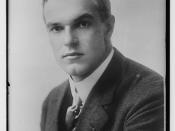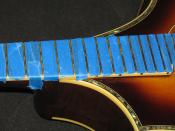The structure uses a standard sonnet layout of 14 lines. A spilt after line 8 creates an octave of 8 lines and a sestet of 6. The octave exhibits a Petrarchan rhyme scheme, using an ABBAABBA pattern, the sestet however changes to CDDECE.
Throughout there is use of enjambement, of the 14 lines 9 run on. This prevents the octave being spilt into quatrains, as line 4 requires us to read on to grasp it's meaning.
The octave opens with visual images of birds in the countryside. Expecting to find 10 syllables per line, we are presented with 11 in both lines 1 and 12. The repeated soft 's' and 'l' sounds giving the end of line 1 a flowing, graceful feel, reminiscent of birds in flight and cementing this strong visual imagery.
The diction throughout is predominately of a slightly archaic country theme, though also containing a few military references.
The "parleying" starlings and rooks taking "commands" hint towards Thomas' inspiration coming from his surroundings.
The theme discusses time being a cycle, with history both natural and man-made repeating itself. This thought is compounded by the repetition of "a thousand years" linking images with a perceived passing of time. Also with the visualisation of rooks circling, known as "winding the clock" (http://www.edp24.co.uk/content/HiddenNorfolk/asp/2005/01/050101Superstitions.asp). Concluding the octave, Thomas questions if the world will go on indefinitely without him.
The sestet continues the theme. Line 12 bringing the first literal mention of war, clearly an influence on the piece, before provoking the thought that wars will be fought if man chooses it or not. Line 12's closing punctuation allows a closing couplet. Here we are left with the thought that god, who most would have turned to in such dire times as war is powerless to stop what is happening. Man...



Edward Thomas' February Afternoon
Describing a poem is one of the harder things to do in a short essay. This does it extremely well. It is a well reasoned, well-written, remarkably substantive effort. BRAVO!
2 out of 2 people found this comment useful.